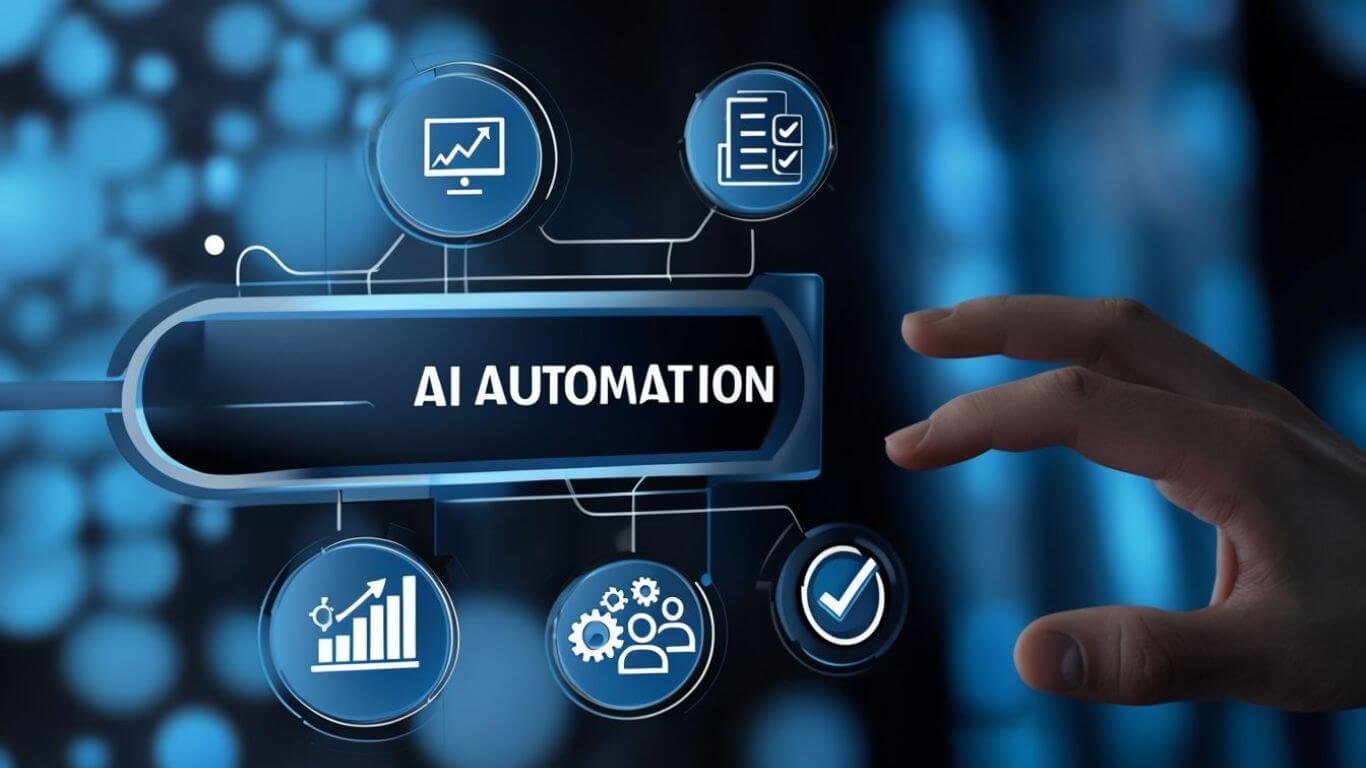AI Automation Explained: Benefits, Challenges, and the Future Ahead

What is AI Automation?
Artificial Intelligence (AI) has evolved from being a futuristic concept to becoming a core part of today’s business landscape. One of its most impactful applications is AI automation, a technology that merges the power of artificial intelligence with automation tools to streamline and optimize business processes.
what exactly is AI automation?
In simple terms, AI automation combines traditional automation which follows fixed rules with AI technologies like machine learning, natural language processing (NLP), and data analytics to make systems smarter. It doesn’t just execute tasks; it learns from data, makes predictions, and improves decisions over time.
For instance, in a customer service setting, traditional automation might send an automatic reply like “We’ve received your request.” But AI automation can analyze the message, understand the issue, and route it to the right department or even generate a helpful response automatically.
This shift from rule-based automation to intelligent automation is transforming how organizations work, offering efficiency, adaptability, and data-driven insights.
How Does AI Automation Work?
AI automation works through an interconnected system of technologies that gather data, analyze patterns, and make real-time decisions.
Here’s how the process typically unfolds:
1. Data Collection
AI systems first gather data from multiple sources such as emails, CRM tools, or workflow automation software. This data acts as the foundation for analysis.
2. Pattern Recognition and Learning
Using machine learning algorithms, the system studies the data to recognize patterns, behaviors, and trends. The more data it processes, the smarter it becomes.
3. Decision-Making
Once the AI identifies a pattern, it uses predictive models to make decisions for example, prioritizing leads, forecasting demand, or detecting potential errors.
4. Automated Execution
After a decision is made, robotic process automation (RPA) or workflow automation tools execute tasks automatically such as updating records, sending notifications, or generating reports.
5. Continuous Improvement
Unlike static automation, AI learns from each cycle, constantly improving its accuracy and decision-making.
This combination of intelligence and automation creates a system that not only performs tasks faster but also gets better with time turning businesses into agile, data-driven organizations.
Benefits of AI Automation in Business Processes
AI automation offers powerful benefits across industries and departments. Let’s explore the top advantages that make it a must-have for modern enterprises.
1. Improved Efficiency and Productivity
AI automation reduces repetitive, manual work such as data entry, reporting, and document processing. This gives employees more time to focus on creative, strategic, and high-value tasks.
2. Enhanced Accuracy
By eliminating human error, AI ensures that data and processes remain consistent and precise. This is particularly useful in areas like finance, HR, and compliance where accuracy is critical.
3. Cost Savings
Automating repetitive processes reduces labor costs and minimizes the need for manual supervision. Over time, the investment in automation pays off through lower operational expenses.
4. Smarter Decision-Making
AI automation doesn’t just follow rules it learns from patterns and provides insights. Businesses can make faster, data-driven decisions that improve performance and competitiveness.
5. Better Customer Experience
AI chatbots, virtual assistants, and automated helpdesk systems ensure quick responses and 24/7 availability. Customers receive faster, more personalized support improving satisfaction and loyalty.
6. Scalability
AI automation can handle increasing workloads without needing additional staff. Whether you’re processing 100 or 10,000 transactions, the system scales effortlessly.
7. Integration Across Tools
Modern automation platforms easily integrate with CRMs, ERPs, marketing systems, and other tools creating a connected digital ecosystem.
By combining intelligence, scalability, and precision, AI automation helps businesses do more with fewer resources while maintaining high standards of quality and speed.
Challenges of AI Automation
While AI automation delivers immense value, it also presents a few challenges that organizations should address to ensure smooth adoption.
1. Implementation Complexity
Setting up AI systems requires a clear understanding of processes, goals, and data sources. Without a proper plan, automation can become fragmented and ineffective.
2. Data Quality Issues
AI depends heavily on data. Poor-quality or incomplete data can lead to incorrect insights or flawed decisions, reducing the effectiveness of automation.
3. High Initial Investment
Although AI automation provides long-term ROI, the upfront cost for setup, training, and integration can be significant especially for small businesses.
4. Employee Resistance
Some employees fear that automation may replace their roles. Businesses need to communicate that AI automation enhances jobs rather than eliminates them, focusing on empowering teams to work smarter.
5. Integration Limitations
Not all existing systems are compatible with AI automation tools. Ensuring seamless integration with legacy software may require additional technical support or customization.
6. Security and Compliance
Automation tools that handle sensitive data must comply with privacy laws like GDPR or HIPAA. Maintaining cybersecurity and ethical AI use is essential.
By understanding and addressing these challenges, organizations can ensure successful adoption and maximize the value of their AI automation initiatives.
The Future of Work and AI Automation
The future of work is being shaped by intelligent technologies and AI automation is leading that transformation. As AI becomes more advanced, businesses are shifting from basic automation to intelligent process automation (IPA), where systems can make decisions, adapt to new conditions, and even self-correct errors.
Here are some key trends defining the future:
1. AI-Powered Decision-Making
AI will play a central role in guiding business strategies. From predictive analytics to risk assessment, companies will rely on automation for real-time insights and forecasting.
2. Integration with Machine Learning
As machine learning consulting becomes more common, organizations will build AI models tailored to their unique needs making automation even more intelligent and efficient.
3. The Rise of AI-Driven Workflows
Future workflow automation software will automatically adapt to changing conditions assigning tasks, managing resources, and optimizing processes without human intervention.
4. Human-AI Collaboration
Instead of replacing workers, AI automation will act as a digital co-worker, handling routine work while humans focus on creativity, innovation, and decision-making.
5. Ethical and Transparent AI
As automation grows, businesses will prioritize ethical AI practices ensuring systems are transparent, unbiased, and used responsibly.
In short, the future of AI automation lies in a balanced partnership between humans and machines where technology enhances human capabilities and drives continuous innovation.
Final Thoughts
AI automation is redefining how modern organizations function. By combining intelligence, learning, and automation, businesses can eliminate inefficiencies, improve decision-making, and deliver exceptional customer experiences.
However, the success of AI automation depends on choosing the right strategy, tools, and guidance. Partnering with experts in ai strategy consulting or a process automation consultant can help you identify the best workflows to automate and ensure seamless integration.
As businesses move into a future driven by digital transformation, adopting AI automation isn’t just a competitive advantage it’s a necessity. Those who embrace it today will lead the market tomorrow.




